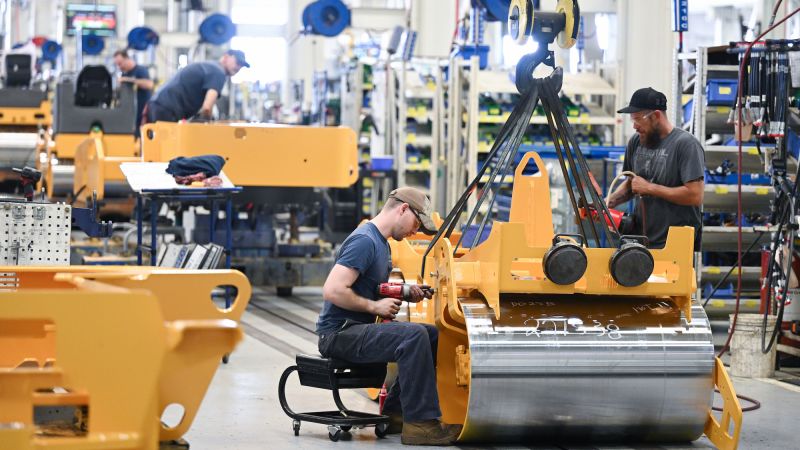US wholesale inflation slowed as expected in July, with the Producer Price Index showing a 2.2% increase over the past 12 months, lower than the 2.7% increase in June. Prices rose 0.1% on a monthly basis, slower than the previous month. The Dow, S&P 500, and Nasdaq all jumped in response to the news, as investors welcomed the slowdown in price hikes. The PPI serves as a potential indicator of retail-level inflation, with the crucial Consumer Price Index for July set to be released the following day.
The modest increase in overall PPI for July was driven by a 0.6% rise in goods prices, while services prices fell by 0.2%. When excluding energy and food prices, core PPI prices were flat for the month, resulting in an annual gain of 2.4%, the lowest since March. This lower-than-expected reading was seen as evidence of cooling inflation, providing stability for the stock market rebounding from recent volatility. The PPI data was seen as the appetizer for the forthcoming CPI report, which was expected to provide a more critical look at consumer price changes.
This week’s inflation data, especially the CPI report, is expected to be closely scrutinized in the wake of a weak jobs report last week. Economists are anticipating a gradual decline in inflation, with gas prices potentially affecting the July CPI reading. Housing-related prices, which have contributed to high inflation in the past, are showing signs of slowing down. Boussour projected three quarter-point rate cuts from the Federal Reserve by the end of the year, followed by another 1.25 points of cuts in 2025.
While a hotter-than-expected lift in the July CPI could unnerve investors and spark stagflation fears, these concerns are considered unfounded. The current unemployment rate remains relatively low, and inflation has cooled significantly since a peak in June 2022. Survey data from the Federal Reserve Bank of New York also showed a decline in consumers’ three-year inflation expectations. Federal Reserve Chair Jerome Powell stated that he does not see signs of stagflation, and an acceleration in inflation is not expected to change the Fed’s plans to cut interest rates at their upcoming meeting in September.
Inflation expectations are a key factor in determining the potential for a stagflation environment, and current data suggests that fears of stagflation are unwarranted. The Federal Reserve’s decision to lower interest rates is not expected to change despite potential inflationary pressures. As the market continues to react to new developments, slight changes in levels may occur. Overall, the data shows signs of cooling inflation and a stable economic environment as investors await the latest CPI report.













